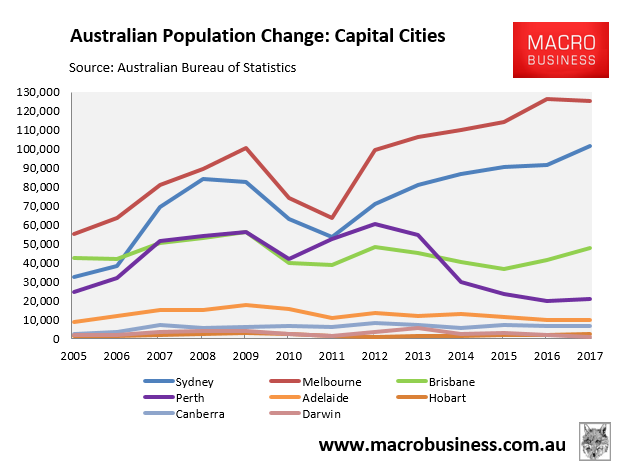
Who would have thunk it: increasing Melbourne’s population by 1.2 million people over the past 13 years has led to massive increases in traffic congestion, according to new data from RACV:
PEAK hour has stretched to six hours a day across Melbourne’s congested road network, new data reveals.
Frustrated drivers are sitting in traffic for longer; some slowing to a third of the average road speed during lengthened peak-congestion periods.
The city’s 10 busiest roads have been revealed by RACV through state-of-the-art sensor technology fitted to vehicles over three months.
The data shows peak travel times have dramatically extended on busy suburban and city roads which are struggling to meet the demands of Melbourne’s fast growing population…
Typical peak hour congestion has blown out from 7.30am-8.30am to 6.30am-9am on the roads, which are being worked even harder in the afternoon.
The noon peak is between 3pm and 6:30pm each day, compared to the typical 5pm to 6pm peak…
Here’s similar data from TomTom showing the huge increase in traffic congestion across both Sydney and Melbourne, owing to immigration-fuelled population growth:
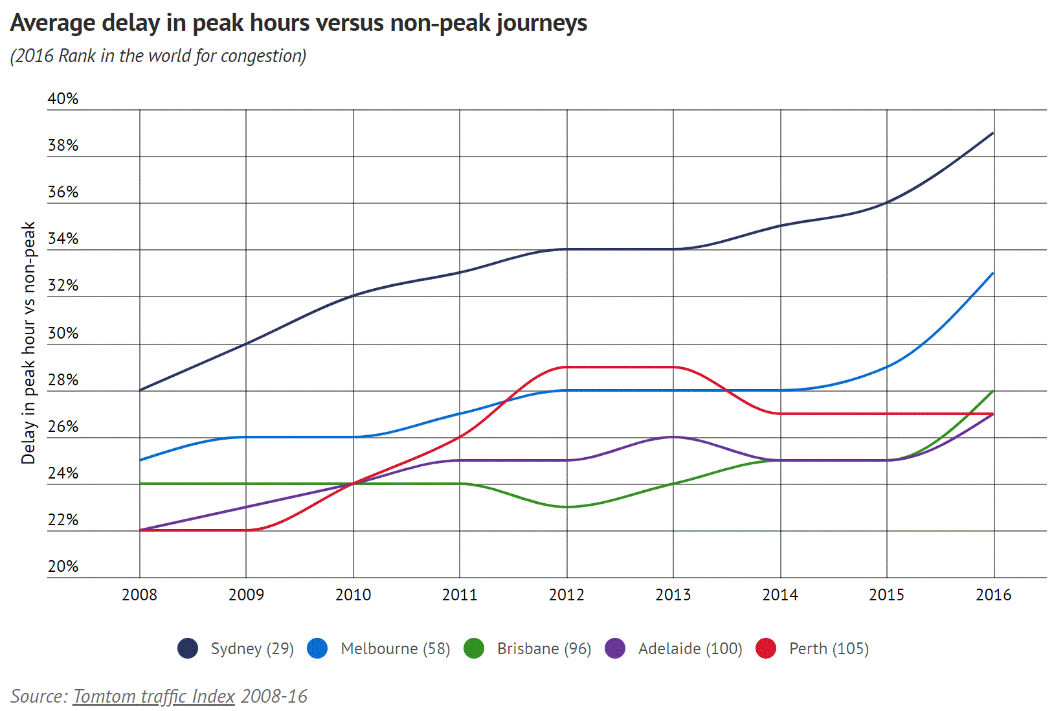
Meanwhile, “avoidable social costs” of congestion are projected by the Bureau of Infrastructure, Transport and Regional Economics to soar as rampant population growth continues to overrun our cities’ infrastructure:
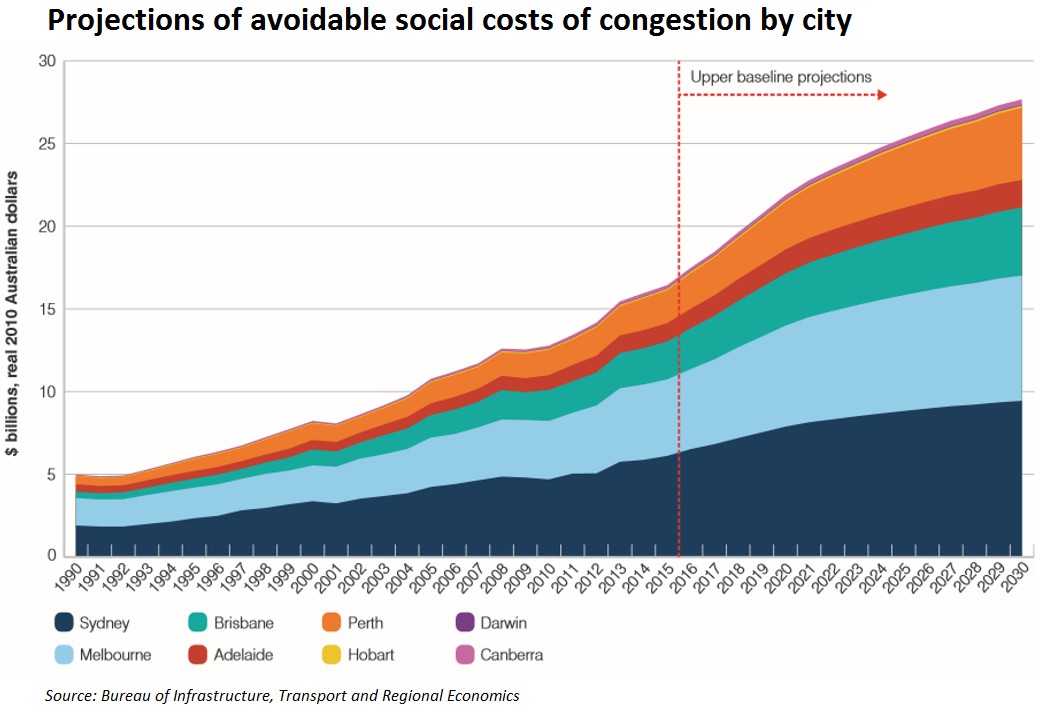
As noted by Mike Seccombe recently in the Saturday Paper:
The Bureau of Infrastructure, Transport and Regional Economics estimates the “avoidable” social costs of traffic congestion in the eight Australian capitals cities. They reckoned it to total $16.5 billion in the 2015 financial year, up from $12.8 billion in the 2010 financial year. By 2030, they forecast, the cost of congestion would rise to between $27.7 billion and $37.3 billion. That is roughly the cost of the National Disability Insurance Scheme, fully implemented.
Remember, the Productivity Commission (PC) in 2013 also estimated that total private and public investment requirements over the next half century will need to be more than 5-times the cumulative investment made over the last half century:
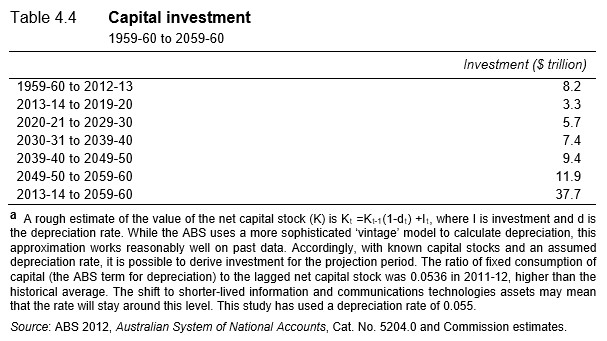
Infrastructure Australia has also made clear that it will get much worse under every build-out scenario:
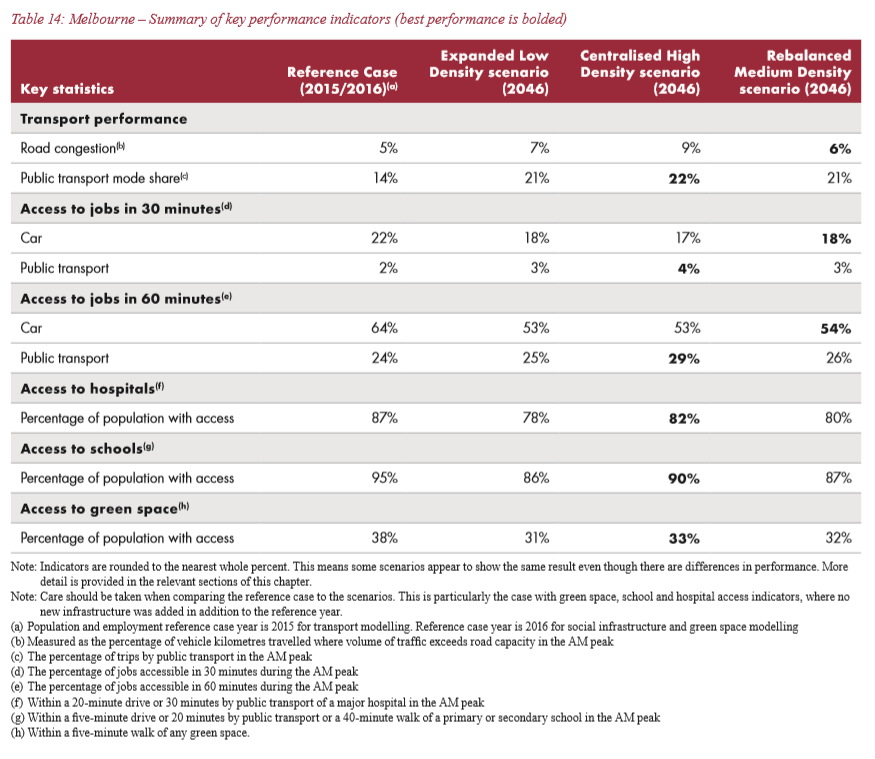
I have lived in Melbourne for all but three years of my life and you can literally feel the liveability being squeezed out of the place each year as the endless population deluge overruns all manner of infrastructure.

